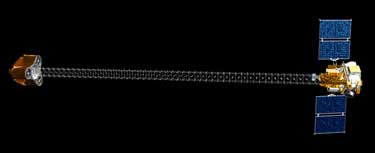NASA plans to launch three new telescopes to study the energy emanating from exploding black holes.
Originally due to start in 2005, NASA cancelled the work on its so-called Nuclear Spectroscopic Telescope Array (NuSTAR) programme shortly thereafter due to changing budget priorities.
Now, however, the US space agency has decided it will bankroll the mission to the tune of $105m. Plans are to launch the telescopes into a low-Earth orbit in 2011.
The NuSTAR project itself was initiated by Columbia University Professor of physics Charles Hailey, whose research group has worked on the optical systems to focus hard X-rays for more than a decade, along with Fiona Harrison of the California Institute of Technology.
The optics that are to be used in the project were first demonstrated on an earlier NASA project, the High Energy Focusing Telescope (HEFT), a balloon-borne experiment conducted by CalTech and Columbia that used depth-graded multilayer optics and cadmium zinc telluride pixel detectors to image astrophysical sources in the hard X-ray band. Its maiden flight of 25 hours took place in May 2005 from Fort Sumner, New Mexico.

The three new telescopes that are to be developed at Columbia are larger versions of those that Columbia provided for the HEFT




Glasgow trial explores AR cues for autonomous road safety
They've ploughed into a few vulnerable road users in the past. Making that less likely will make it spectacularly easy to stop the traffic for...